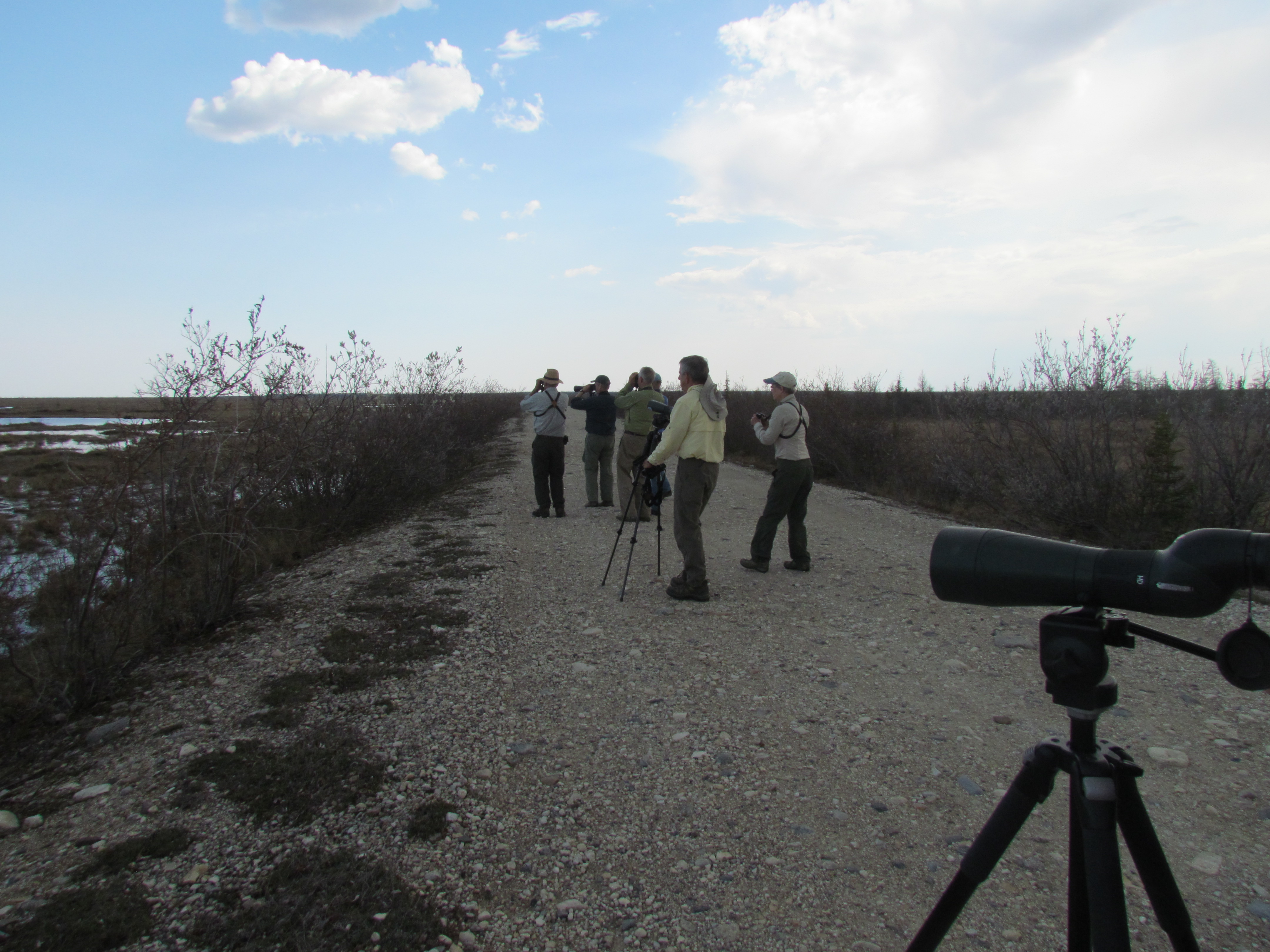
Birding at the Barrens
Credit: Jeff Wells
Thursday dawned bright and warm and we were happy. Today was to be our day to be out all day and make our longest trek on the 60 kilometers of road that are available in Churchill. Paul would take us out on the Nature 1st Tour minibus along the Coast Road and Launch Road to the Northern Studies Centre and on to Twin Lakes to search for the Hawk Owl that Tim Barksdale had seen there a few days before. The restaurant at the Seaport Hotel provided us with box lunches and a big container of coffee and we were on our way. First stop was Paul’s house out toward Bird Cove where we looked across a valley to see a flock of Sandhill Cranes foraging in some old piles of chaff from the wheat granary operation at the harbor.
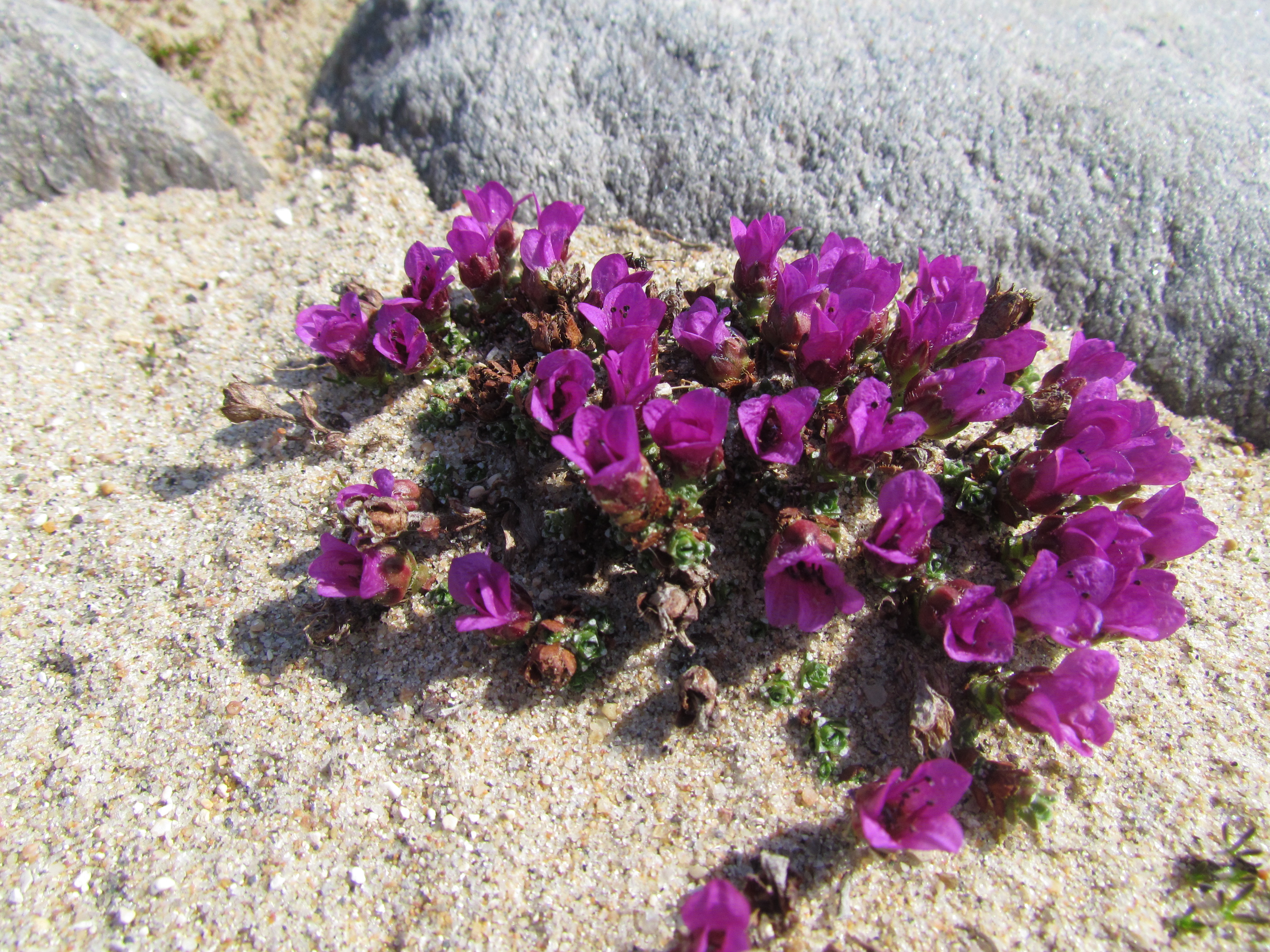
Purple Saxifrage
Credit: Jeff Wells
Bunches of startlingly beautiful Purple Saxifrage that seemed to erupt from the ancient sand dunes were a bonus as was Paul’s tales of the Polar Bears that regularly stop by his house in the late fall and the inadvertent shocks he has received from the electric fencing on his house that are meant to deter the bears. Like all the Churchill residents we met, Paul lives carefully and cautiously with the bears and seems to take it all in stride. He did mention being a bit annoyed when, while they were away on vacation, a bear broke a back window and reached in and took out all the clothes on a rack he could reach from outside. Another bear started trying to sleep on a cushion on the back porch that they had left out for the dogs to use so they had to get rid of the cushions.
A little further along we stopped by a sand and cobble beach near the mouth of a small stream and marveled at throngs of nearby Arctic Terns, breeding displays of Semipalmated Plovers, Lesser Yellowlegs, and Least Sandpipers. Several flocks of Snow Buntings, the males bright white and black, foraged along the shore within yards of us.
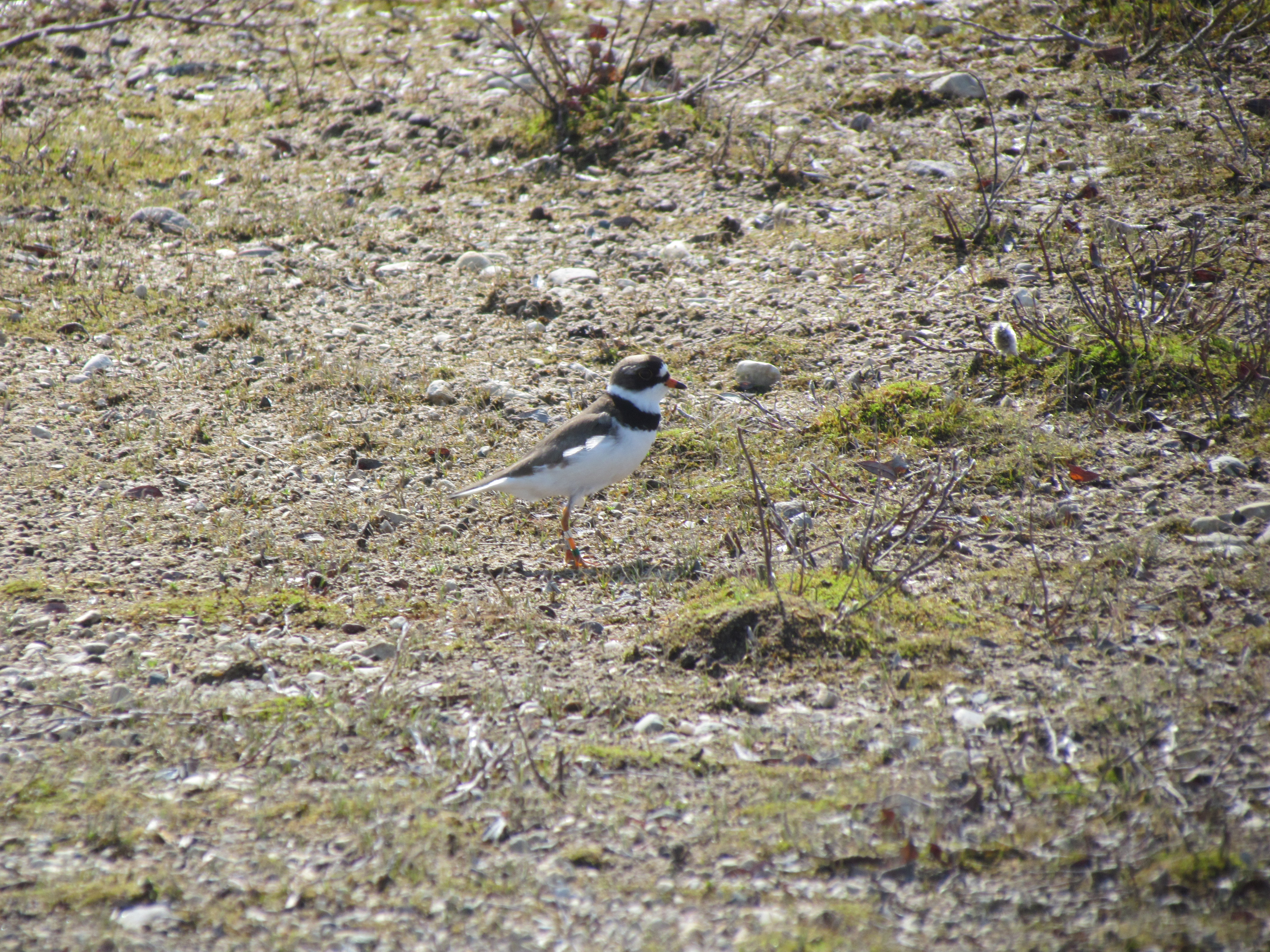
Semipalmated Plover
Credit: Jeff Wells
One of the funnier happenings on the trip occurred when we stopped to look for Willow Ptarmigan behind the home of one of Paul’s friends and chief guides. After searching around the back yard without luck we were about to get back in the bus when Paul spotted a female at the base of a nearby telephone pole. We feasted on stunning views of the close bird for 10 minutes when she decided to scamper away. Just then we heard the comical nasal calls of a ptarmigan from over our heads and discovered that a male Willow Ptarmigan had been sitting on the cross bars of the telephone pole watching us the whole time!
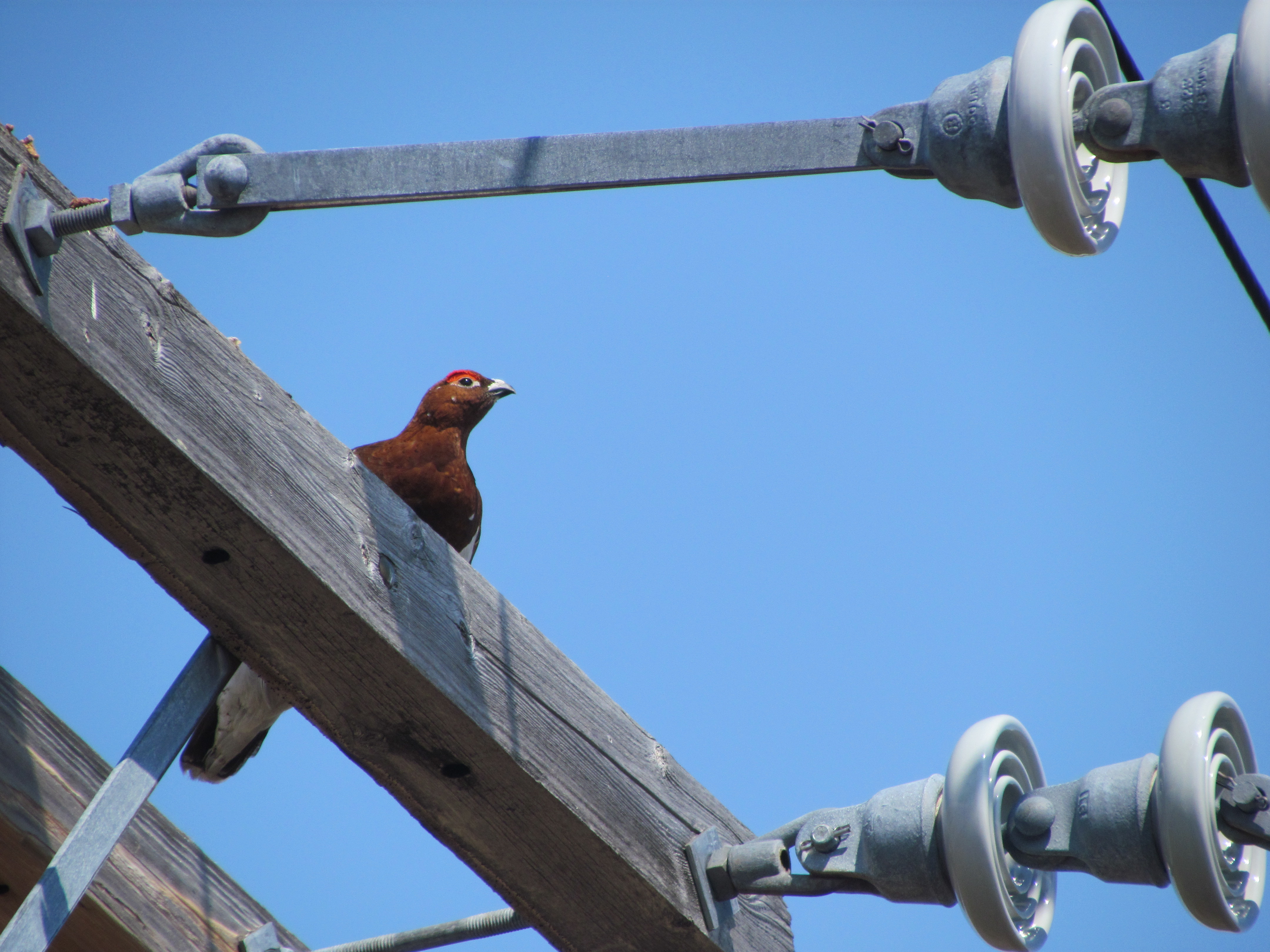
Willow Ptarmigan
Credit: Jeff Wells
We tried again to get in the bus when Paul noticed a distant flock of birds flying in off Hudson Bay. As they got closer we could see the distinctive shapes, flight style and coloration of White Pelicans—an oddity here.
Two dueling male Willow Ptarmigans marched in the open in front of us at the Scout Camp as we had lunch and we spotted a rare-for-Churchill Clay-colored Sparrow nearby. After lunch and an unsuccessful search in the afternoon heat (it reached close to 80 degrees F that day!) for Smith’s Longspur, a pair of Parasitic Jaegers perched on the ground to give us great views through the telescope.
As we trailed back to the bus a Whimbrel suddenly rose from across the tundra, displayed and settled onto the top of small spruce within twenty feet of Winston who had stayed back to take some photos.
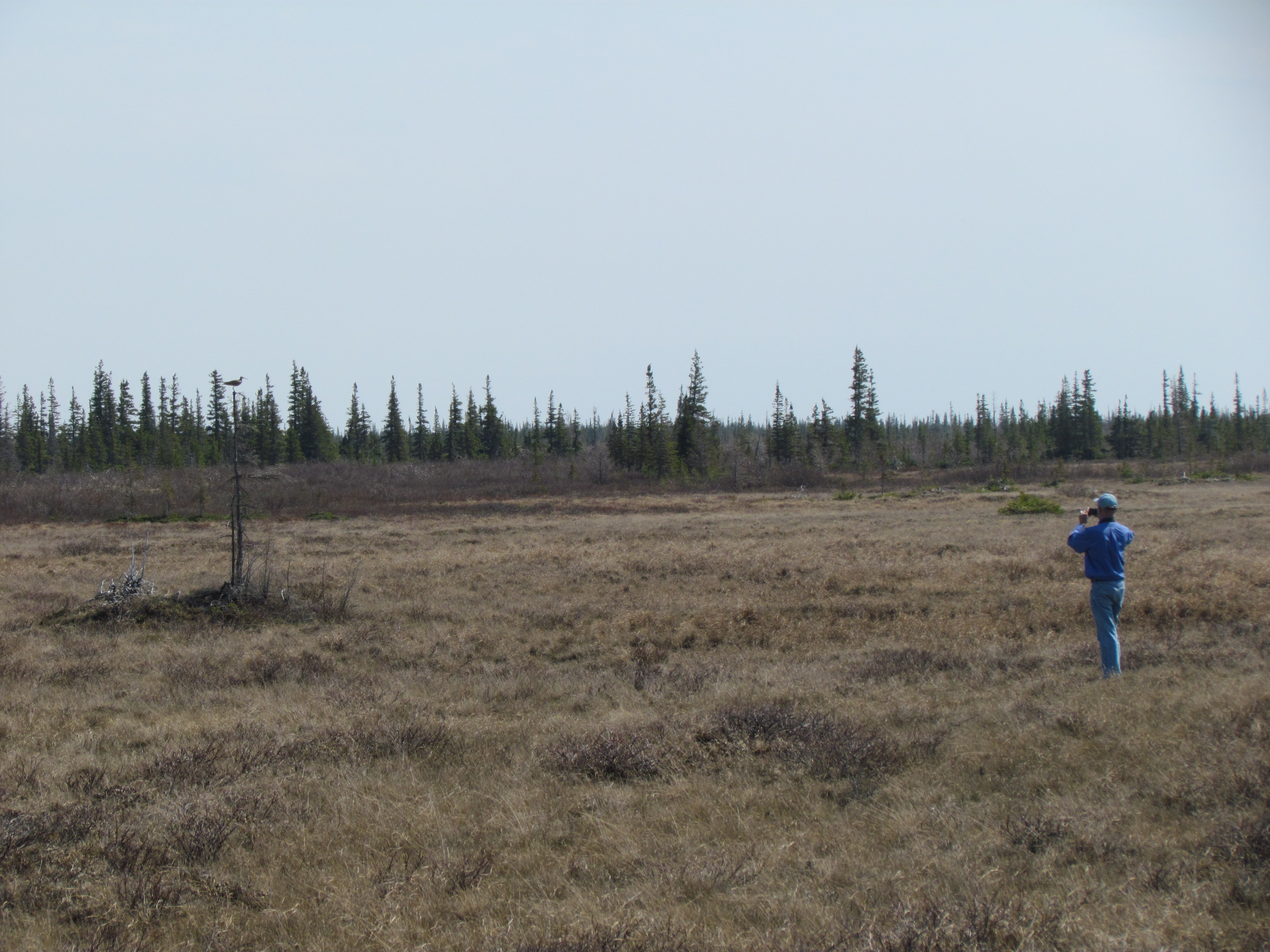
Winston and the Whimbrel
Credit: Jeff Wells
When we pulled into the impressive Northern Studies Research Centre a little later, Paul pointed out his Nature 1st truck that he had rented to a film crew for housing, believe it or not, a polar bear cub and a grizzly bear cub. When we stepped out we could hear one of the bears making some grunting sounds from within the truck. The bears were tame, apparently trained, ones that were being used in a movie that is to be called Midnight Sun. When we went into the Center for a look around at the gift store and cafeteria, several of the female participants noticed the film’s star, a heart throb from the ER television show, sitting in the lounge checking his email.
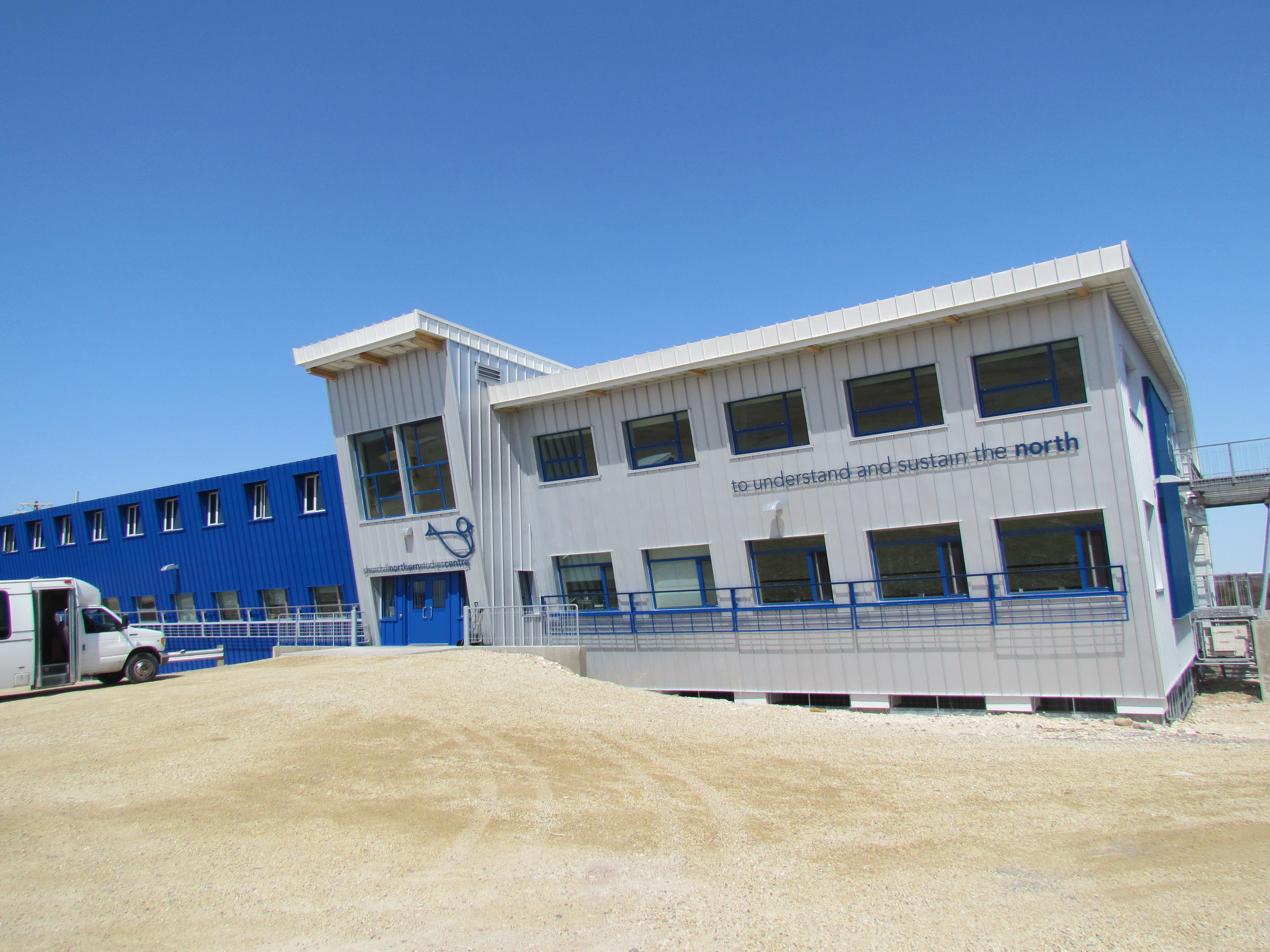
Northern Studies Centre
Credit: Jeff Wells
Passing by the former rocket launchers (Churchill has some really interesting past history as you can tell), we continued down the rather long, bumpy road to Twin Lakes. Halfway through we heard the stuttering trill of an Orange-crowned Warbler and we stopped to enjoy some great views of it as it hopped around in the tamaracks. The road had been constructed during the rocket launching days following south along a glacial esker ridge that was the only dry land in the sea of low, boggy peatland that makes up much of the Hudson Bay lowlands. Further on the road descends to the flat tundra-peatland in an area that Paul called the Barrens. Here we hit upon the mother-lode of shorebirds with lots of brightly plumaged American Golden-Plovers along with Short-billed Dowitchers, Hudsonian Godwits, Stilt Sandpipers and a few Dunlin sporting their black belly patches.
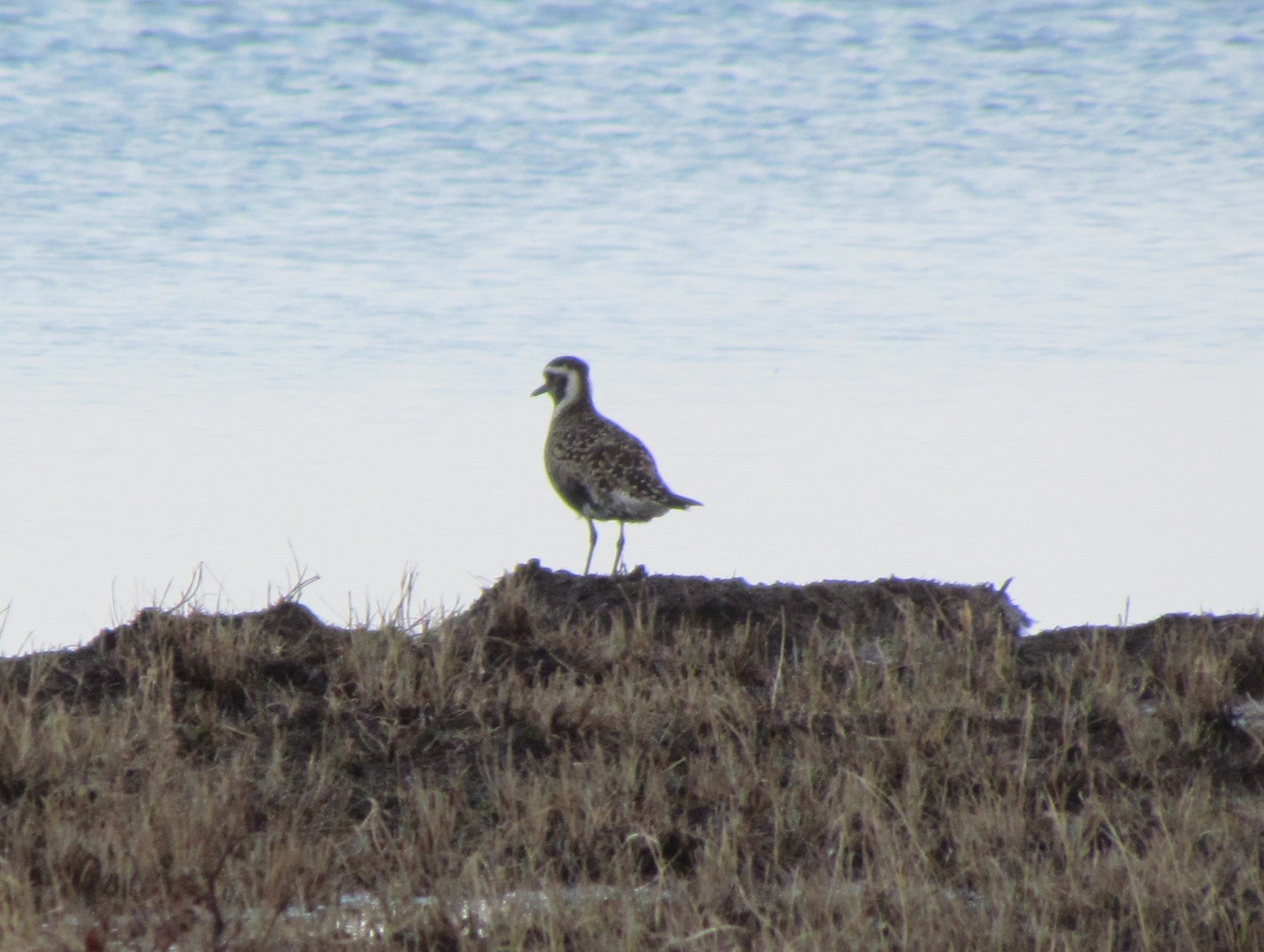
American Golden-Plover
Credit: Jeff Wells
Everyone was hot and tired when we reached the end of the road at Twin Lakes on the edge of a large area that had been the site of forest fire many years ago and was now growing back with a carpet of lime green willow shrubs. We scanned the countless dead tree stubs across the horizon for the telltale silhouette of a Hawk Owl but without success and finally had to give up our search and enjoy views of the vast landscape as we made our way back to town.

